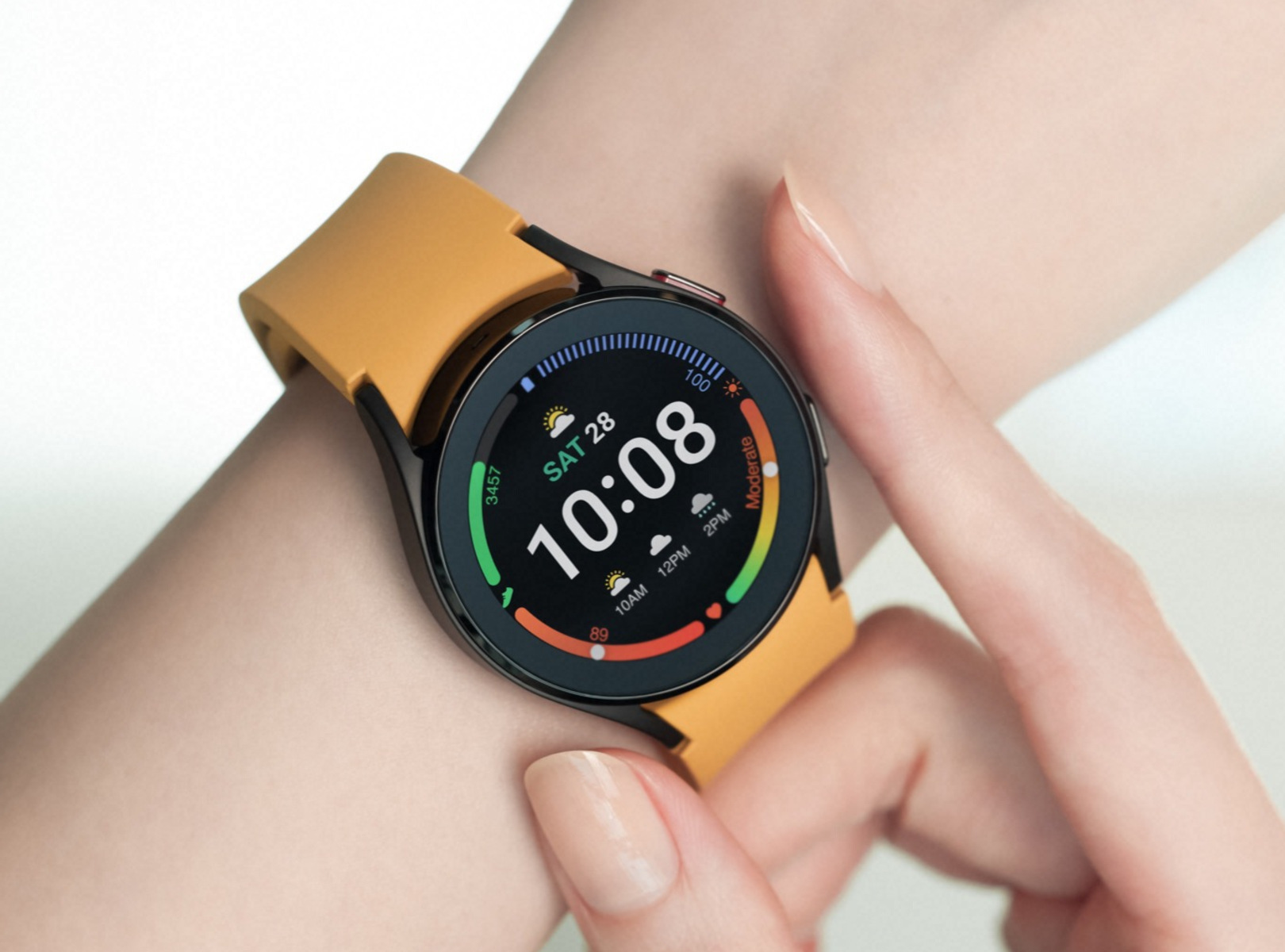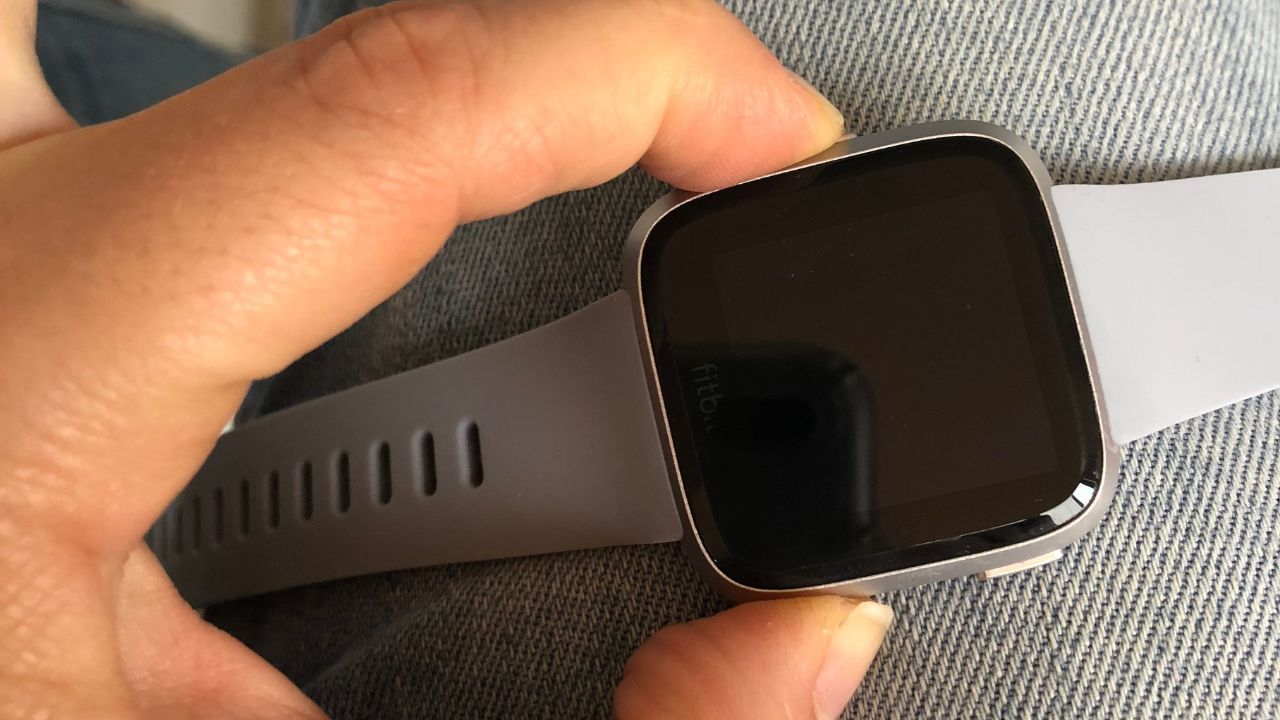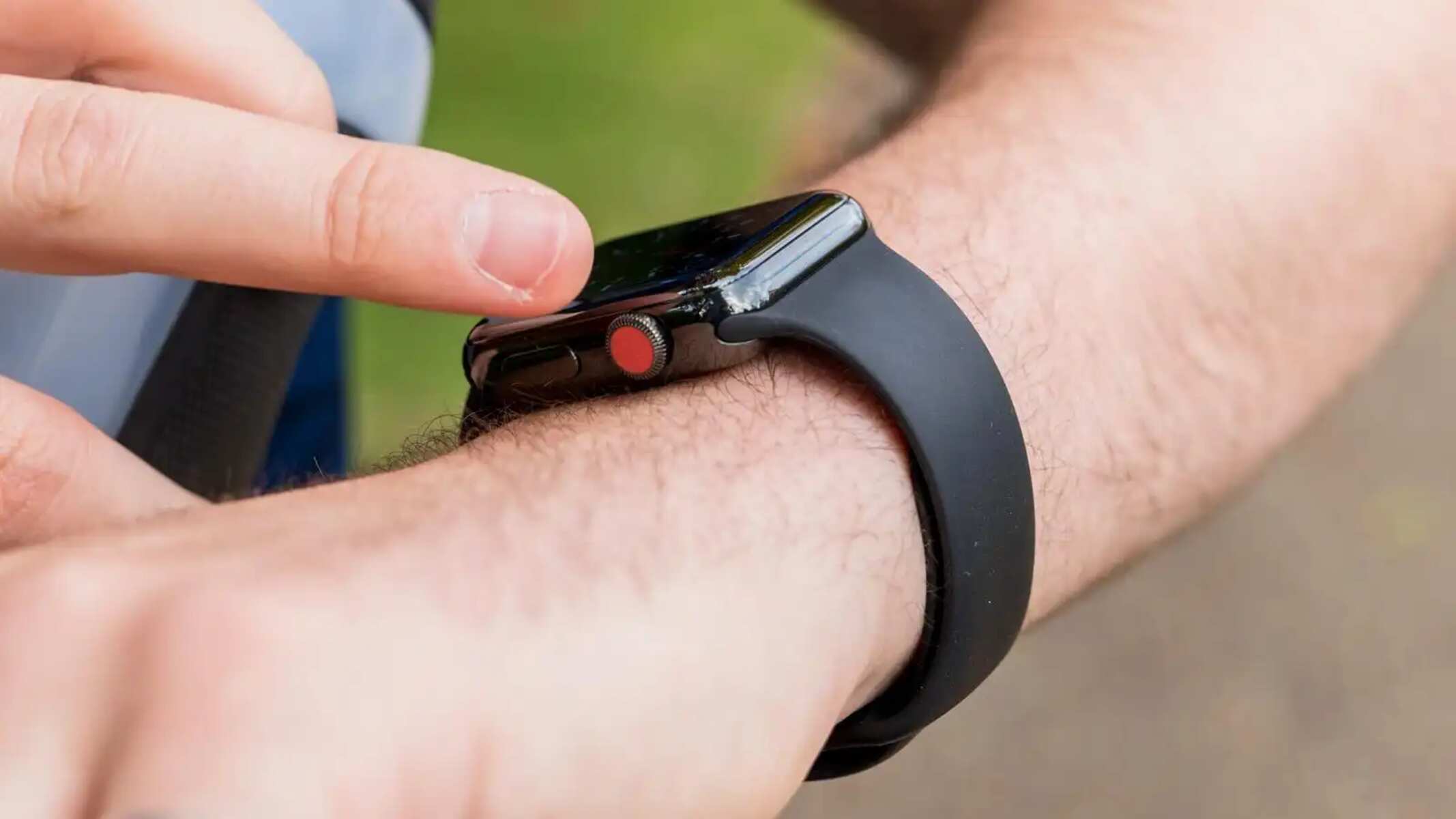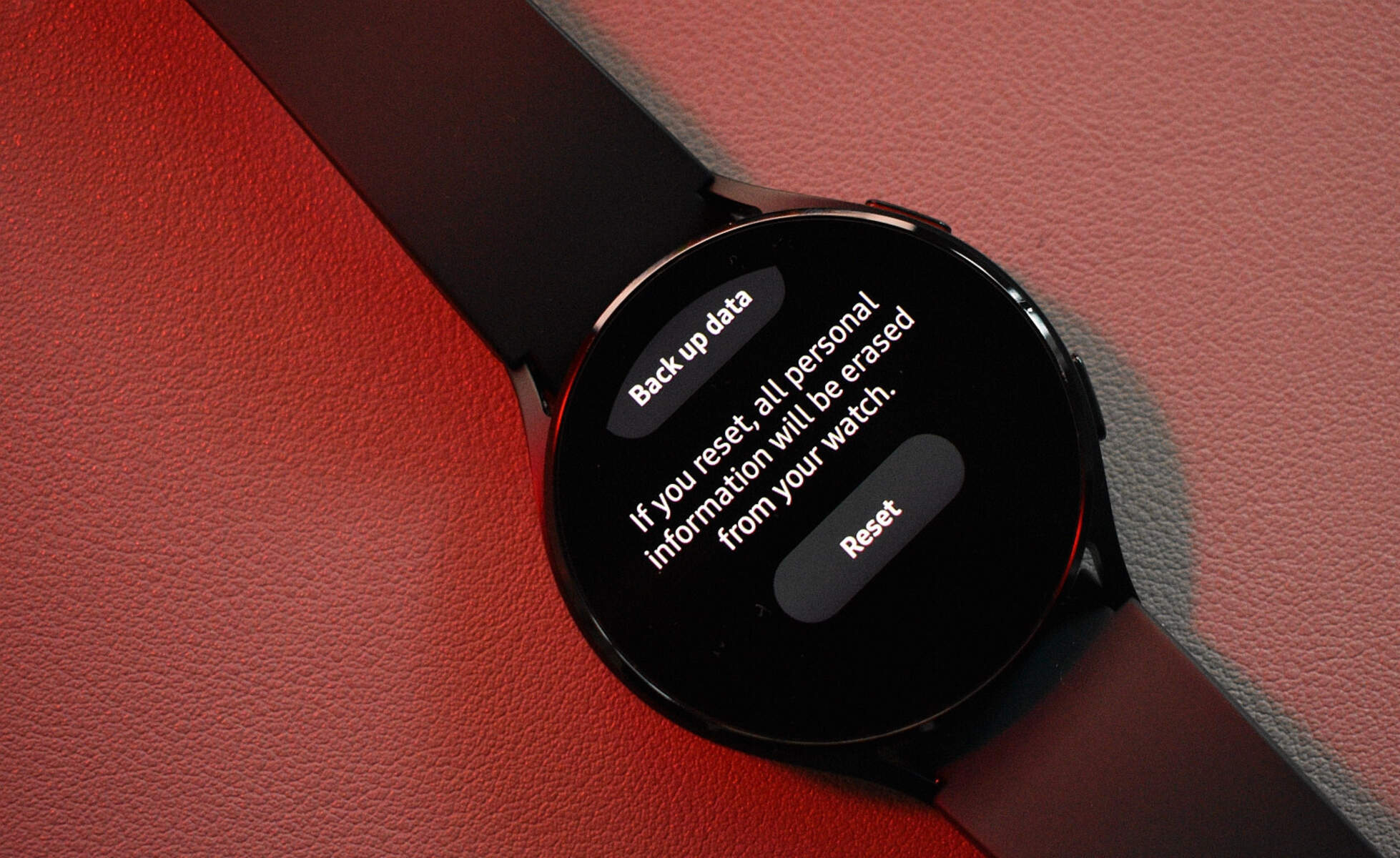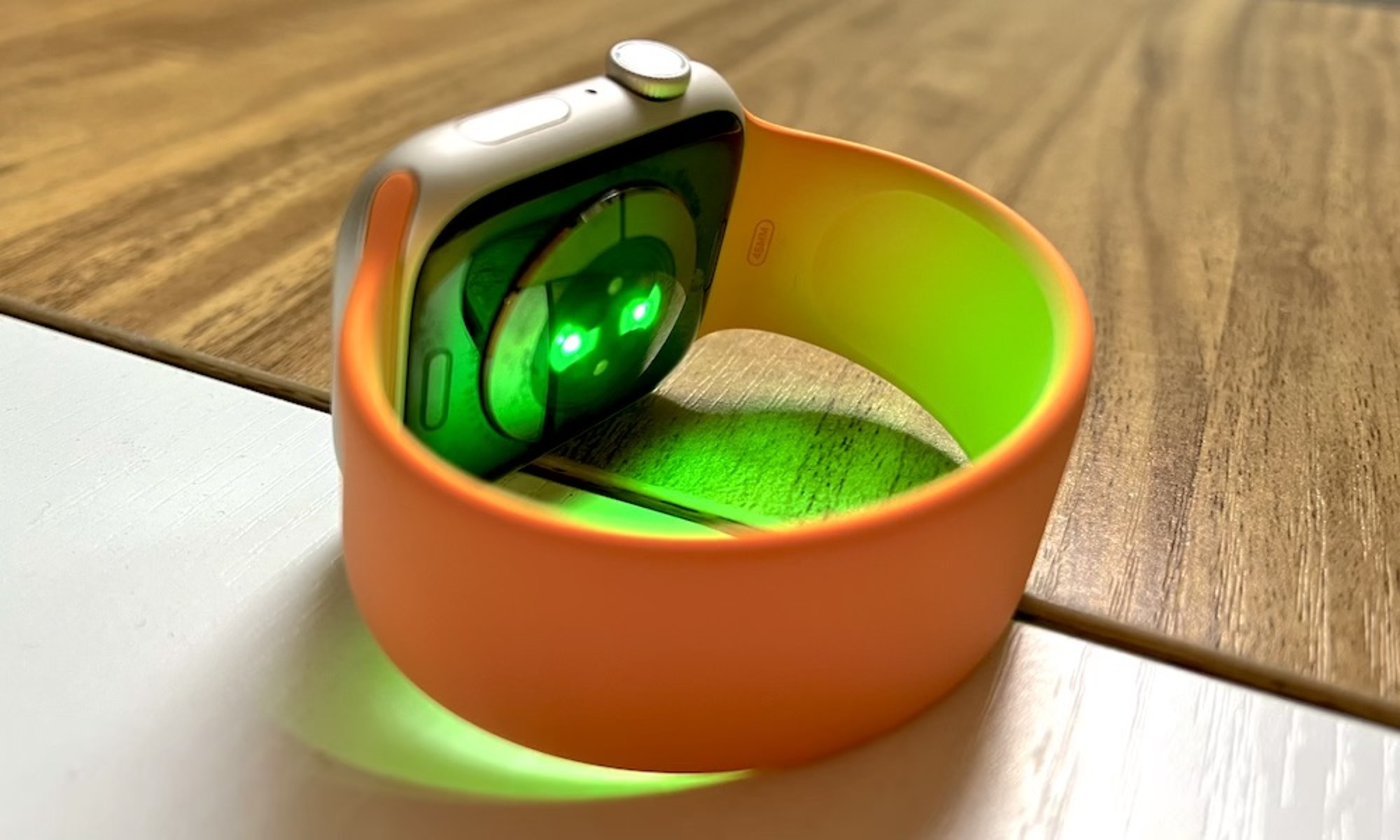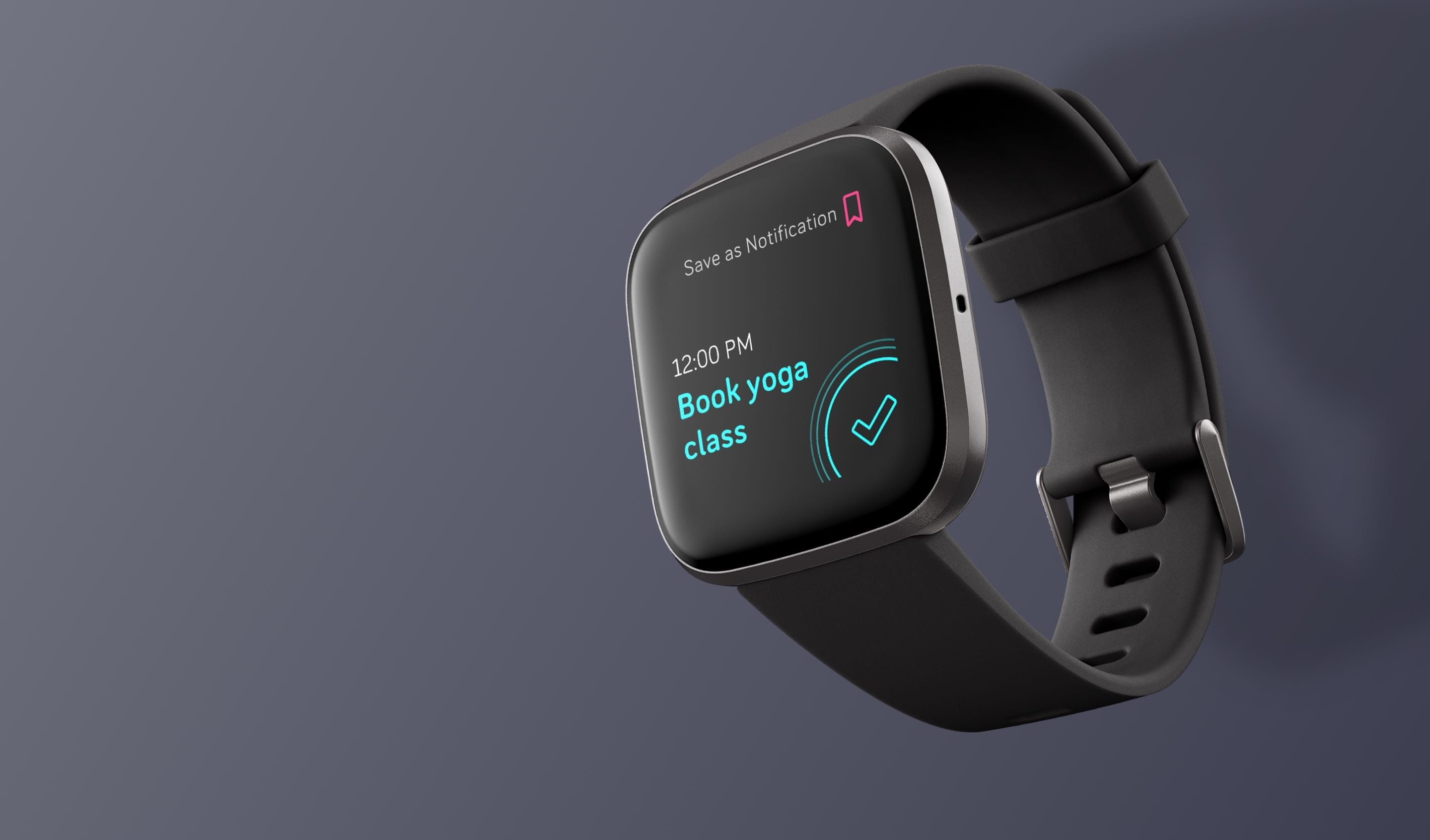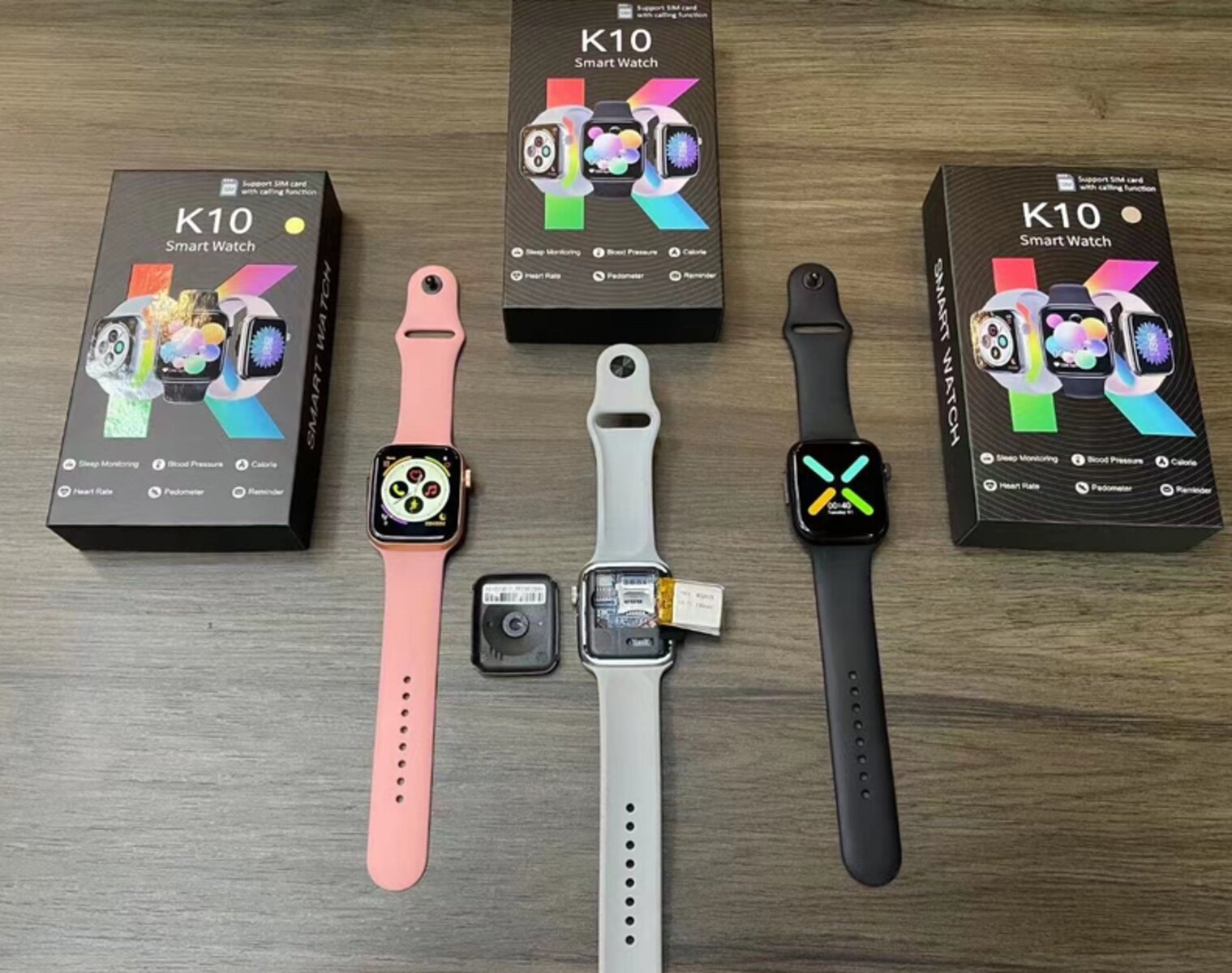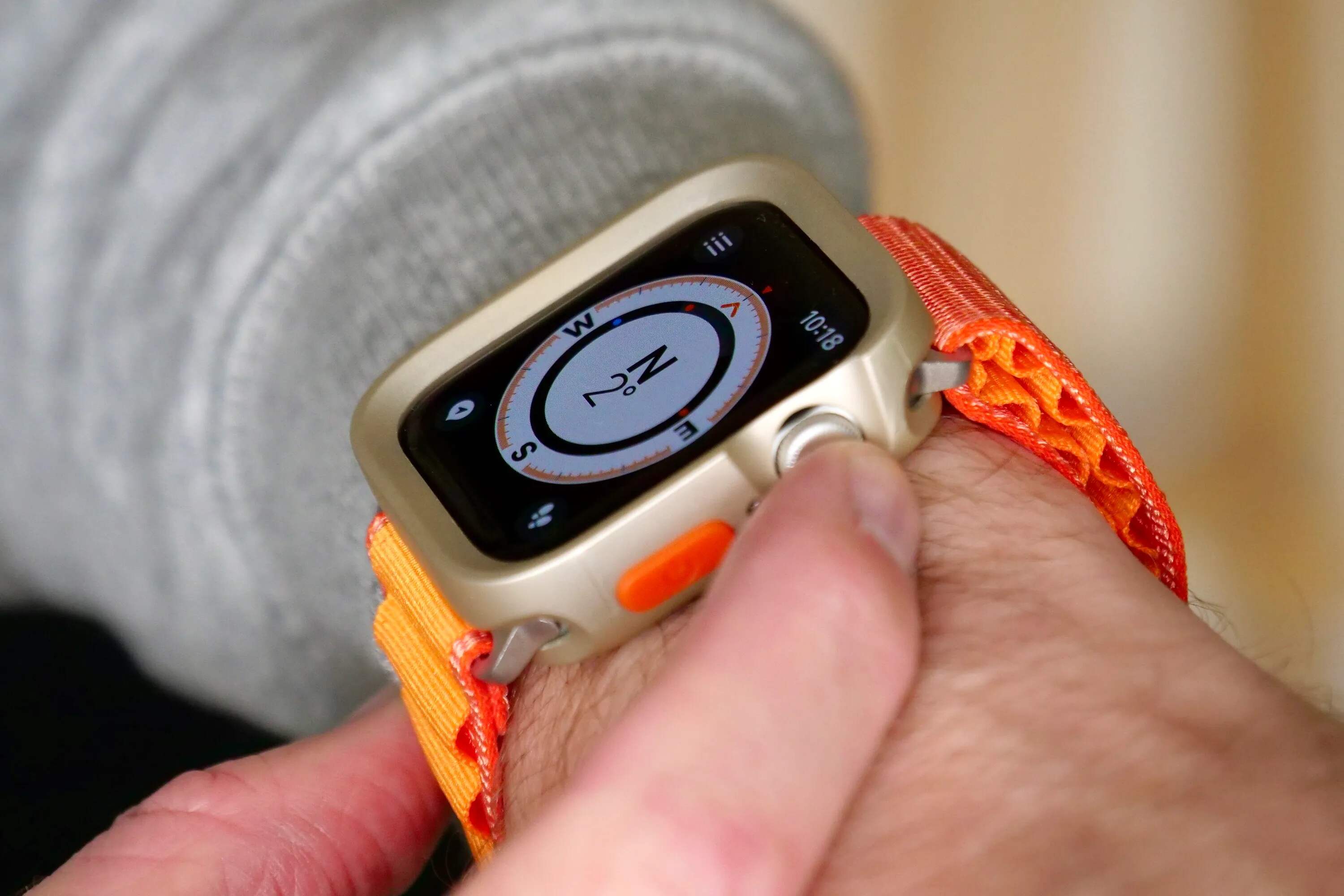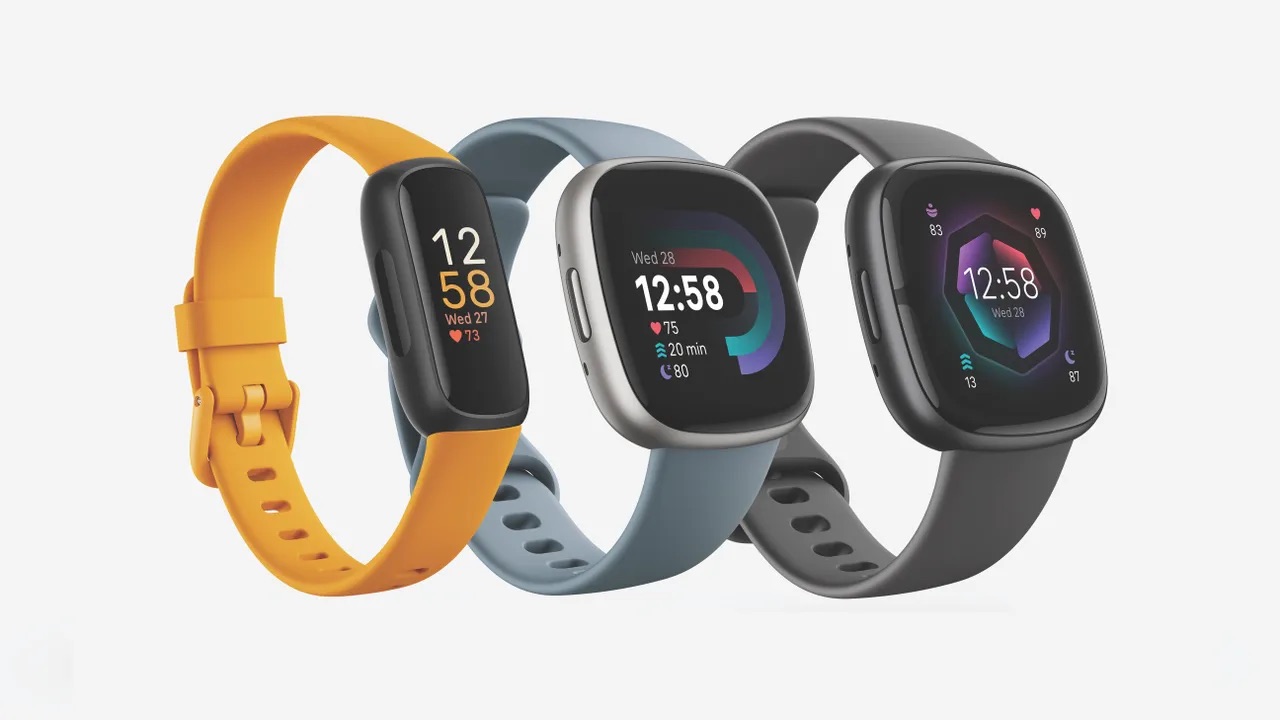Introduction
Smartwatches have become an indispensable part of our daily lives, offering a myriad of features that seamlessly integrate into our routines. From tracking our fitness goals to keeping us connected with notifications and reminders, these nifty devices have revolutionized the way we interact with technology. However, like any electronic device, smartwatches are not immune to malfunctions. Whether it's a battery drain issue, connectivity problems, software glitches, or hardware malfunctions, encountering these hiccups can be frustrating. Fear not, as this troubleshooting guide is here to help you navigate through these common smartwatch malfunctions and get your device back on track.
Understanding the root causes of these malfunctions and knowing how to troubleshoot them can save you time and frustration. By following the steps outlined in this guide, you can tackle these issues head-on and potentially avoid the need for professional repairs or replacements. So, let's dive into the world of smartwatch troubleshooting and empower ourselves to make the most of these innovative gadgets. Whether you're a tech-savvy enthusiast or a casual user, this guide is designed to equip you with the knowledge and skills to overcome smartwatch malfunctions with ease.
Let's explore the common smartwatch malfunctions and the step-by-step troubleshooting methods to address them effectively. Whether your smartwatch is experiencing battery woes, connectivity hiccups, software glitches, or hardware malfunctions, this guide will serve as your go-to resource for resolving these issues and restoring your smartwatch to its optimal functionality. So, without further ado, let's embark on this troubleshooting journey and reclaim the seamless performance of your smartwatch.
Common Smartwatch Malfunctions
Smartwatches, despite their advanced technology, are susceptible to various malfunctions that can disrupt their smooth operation. Understanding these common issues is crucial for effectively troubleshooting them. Here are some of the most prevalent smartwatch malfunctions:
- Battery Drain: One of the most common issues encountered by smartwatch users is rapid battery depletion. This can significantly hinder the device’s usability and convenience.
- Connectivity Problems: Smartwatches rely on seamless connectivity to function optimally. Issues with Bluetooth or Wi-Fi connectivity can disrupt the device’s ability to receive notifications and sync data.
- Software Glitches: Just like any other digital device, smartwatches can experience software hiccups, leading to freezing, unresponsiveness, or erratic behavior.
- Hardware Malfunctions: Physical components of the smartwatch, such as the display, buttons, or sensors, may encounter issues that affect the overall usability and performance of the device.
These malfunctions can be frustrating, but with the right troubleshooting approach, they can often be resolved without the need for professional intervention. By identifying the underlying causes and following systematic troubleshooting steps, users can effectively address these common smartwatch malfunctions and restore their devices to optimal functionality.
Troubleshooting Guide
When faced with smartwatch malfunctions, having a structured troubleshooting approach can make all the difference in resolving the issues effectively. By following a systematic guide, users can navigate through the troubleshooting process with confidence and precision. Here’s a comprehensive troubleshooting guide to address common smartwatch malfunctions:
- Step 1: Assess the Symptoms
Start by identifying the specific issues your smartwatch is experiencing. Is it a battery drain problem, connectivity issues, software glitches, or hardware malfunctions? Understanding the symptoms is crucial for pinpointing the root cause. - Step 2: Check for Updates
Ensure that your smartwatch’s software is up to date. Manufacturers often release updates to address known issues and improve overall performance. Updating the software may resolve many common malfunctions. - Step 3: Restart the Smartwatch
Perform a simple restart of your smartwatch. This can often clear temporary glitches and restore normal functionality. If a restart doesn’t resolve the issue, proceed to the next steps. - Step 4: Battery Optimization
If you’re experiencing battery drain, review your smartwatch’s settings for any power-hungry apps or features. Adjusting settings and reducing screen brightness can help conserve battery life. - Step 5: Connectivity Troubleshooting
For connectivity problems, ensure that Bluetooth or Wi-Fi settings are enabled and properly configured. Try resetting the connections and re-pairing the smartwatch with your smartphone or other devices. - Step 6: Software Reset
If software glitches persist, consider performing a software reset on your smartwatch. This process varies by device, so refer to the manufacturer’s guidelines for the specific steps. - Step 7: Hardware Inspection
If you suspect hardware malfunctions, carefully inspect the physical components of the smartwatch. Look for any visible damage or irregularities that may be contributing to the issues. - Step 8: Contact Support
If the troubleshooting steps fail to resolve the malfunctions, reaching out to the smartwatch manufacturer’s support team or seeking professional assistance may be necessary.
By methodically following these troubleshooting steps, users can address a wide range of smartwatch malfunctions and potentially restore their devices to optimal performance. It’s essential to approach each issue systematically, ruling out potential causes and gradually progressing through the troubleshooting process. With patience and attention to detail, many common smartwatch malfunctions can be effectively resolved without extensive intervention.
Battery Issues
One of the most prevalent smartwatch malfunctions relates to battery performance. Users often encounter rapid battery drain, shortened battery life, or inconsistent charging behavior, which can significantly impact the device’s usability. Addressing battery issues requires a systematic approach to identify the underlying causes and implement effective troubleshooting steps.
Identifying Battery Drain Causes: Begin by assessing the factors contributing to the battery drain. Review the smartwatch’s usage patterns, such as excessive screen-on time, frequent notifications, or intensive app usage. Additionally, poorly optimized settings or outdated software can also lead to increased power consumption.
Battery Optimization: To mitigate battery issues, consider optimizing the smartwatch’s settings to conserve power. This may include adjusting screen brightness, enabling power-saving modes, and restricting background app activities. Furthermore, disabling unused features and minimizing notifications can contribute to prolonged battery life.
Charging Anomalies: In cases where the smartwatch exhibits irregular charging behavior, such as slow charging or inconsistent battery percentage readings, inspect the charging cable, connectors, and charging port for any debris, damage, or connectivity issues. Using a different charging cable or power source can help isolate charging-related problems.
Software Updates: Manufacturers often release software updates to address battery optimization and improve power management. Ensure that your smartwatch’s firmware is up to date to leverage potential enhancements in battery performance.
Battery Health Monitoring: Some smartwatches offer built-in battery health monitoring features that provide insights into the battery’s condition and usage patterns. Utilize these tools to gain a better understanding of the battery’s performance and identify any degradation over time.
Professional Evaluation: If persistent battery issues persist despite troubleshooting efforts, contacting the smartwatch manufacturer’s support team or seeking professional evaluation may be necessary. They can provide insights into potential hardware-related concerns and offer tailored solutions to address battery malfunctions.
By systematically addressing battery issues through optimization, software updates, and diligent monitoring, users can mitigate common battery-related malfunctions and enhance the overall usability of their smartwatches.
Connectivity Problems
Connectivity issues can significantly impede the functionality of a smartwatch, hindering its ability to receive notifications, sync data, and interact with paired devices. Resolving connectivity problems requires a systematic approach to identify the underlying causes and implement effective troubleshooting steps.
Assessing Connectivity Concerns: Start by assessing the nature of the connectivity problems. Determine whether the issues pertain to Bluetooth, Wi-Fi, or both. Understanding the specific connectivity challenges will guide the troubleshooting process.
Signal Interference: Signal interference from other electronic devices or environmental factors can disrupt Bluetooth and Wi-Fi connectivity. Minimize potential interference sources and ensure that the smartwatch is within the optimal range of the paired device or network.
Pairing and Reconnection: If the smartwatch fails to connect or maintain a stable connection with a paired device, consider unpairing and re-pairing the devices. This can often resolve connectivity hiccups caused by pairing irregularities or communication errors.
Network Configuration: For Wi-Fi connectivity issues, verify that the smartwatch is connected to a stable and compatible network. Review the network settings and ensure that the Wi-Fi signal strength is sufficient for reliable connectivity.
Device Compatibility: Ensure that the smartwatch is compatible with the paired smartphone or other connected devices. Compatibility issues can lead to connectivity challenges, impacting the seamless interaction between the smartwatch and external devices.
Software Updates: Manufacturers frequently release software updates to address connectivity optimizations and improve device compatibility. Ensure that the smartwatch’s firmware is up to date to leverage potential enhancements in connectivity performance.
Reset Network Settings: In cases of persistent connectivity issues, consider resetting the network settings on the smartwatch. This can clear any network-related configurations or errors that may be contributing to the connectivity problems.
Professional Assistance: If troubleshooting steps fail to resolve connectivity issues, contacting the smartwatch manufacturer’s support team or seeking professional evaluation may be necessary. They can provide insights into potential hardware-related concerns and offer tailored solutions to address connectivity malfunctions.
By systematically addressing connectivity problems through signal management, re-pairing, network configuration, and software updates, users can effectively resolve common connectivity malfunctions and restore the seamless interaction between their smartwatches and external devices.
Software Glitches
Software glitches can disrupt the seamless operation of a smartwatch, leading to freezing, unresponsiveness, or erratic behavior. Resolving software-related malfunctions requires a systematic approach to identify the underlying causes and implement effective troubleshooting steps.
Identifying Software Anomalies: Begin by identifying the specific software glitches affecting the smartwatch. Common issues include unresponsive screens, app crashes, slow performance, or erratic behavior. Understanding the nature of the glitches is crucial for targeted troubleshooting.
Software Updates: Ensure that the smartwatch’s software is up to date. Manufacturers often release updates to address known software issues, improve stability, and introduce new features. Installing the latest firmware can often resolve prevalent software glitches.
App Management: Review the installed apps on the smartwatch and assess their impact on performance. Uninstalling or disabling problematic apps can alleviate software-related issues, especially if certain apps are causing conflicts or excessive resource consumption.
Cache Clearing: Clearing the cache of individual apps or the entire smartwatch system can eliminate temporary data and potentially resolve software glitches caused by corrupted or outdated cache files.
Factory Reset: If persistent software glitches persist, consider performing a factory reset on the smartwatch. This process restores the device to its original settings, eliminating software irregularities and potentially resolving persistent glitches. It is essential to back up important data before initiating a factory reset.
Professional Evaluation: If software-related malfunctions persist despite troubleshooting efforts, contacting the smartwatch manufacturer’s support team or seeking professional evaluation may be necessary. They can provide insights into potential software or hardware-related concerns and offer tailored solutions to address software glitches.
By systematically addressing software glitches through updates, app management, cache clearing, and, if necessary, a factory reset, users can effectively resolve common software-related malfunctions and restore the optimal performance and responsiveness of their smartwatches.
Hardware Problems
Hardware problems can significantly impact the functionality and usability of a smartwatch, ranging from display issues to sensor malfunctions. Resolving hardware-related malfunctions requires a systematic approach to identify the underlying causes and implement effective troubleshooting steps.
Display Irregularities: If the smartwatch’s display exhibits anomalies such as dead pixels, flickering, or unresponsive touch functionality, inspect the screen for physical damage or irregularities. Cleaning the screen and ensuring proper handling can mitigate minor display issues.
Button and Control Malfunctions: In cases where the smartwatch’s buttons or control mechanisms exhibit irregular behavior, such as sticking or unresponsiveness, carefully inspect the physical components for debris, damage, or misalignment. Cleaning or gently adjusting the components can often alleviate button-related malfunctions.
Sensor Calibration: Smartwatches equipped with sensors for heart rate monitoring, GPS tracking, or environmental measurements may encounter accuracy or calibration issues. Refer to the manufacturer’s guidelines for sensor calibration procedures to ensure optimal functionality.
Band and Strap Maintenance: The integrity and maintenance of the smartwatch’s band or strap are essential for long-term usability. Inspect the band for wear and tear, ensure proper attachment to the device, and clean it regularly to maintain its condition.
Water Resistance: If the smartwatch is designed to be water-resistant, ensure that the water resistance rating is maintained. Regularly inspect the seals, ports, and overall integrity of the device to prevent water intrusion and potential hardware damage.
Professional Evaluation: If hardware-related malfunctions persist despite troubleshooting efforts, contacting the smartwatch manufacturer’s support team or seeking professional evaluation may be necessary. They can provide insights into potential hardware concerns and offer tailored solutions to address hardware problems.
By systematically addressing hardware problems through inspection, maintenance, and, if necessary, professional evaluation, users can effectively resolve common hardware-related malfunctions and ensure the optimal functionality and longevity of their smartwatches.
Conclusion
Smartwatches have undoubtedly enhanced the way we interact with technology, offering a myriad of features that seamlessly integrate into our daily lives. However, encountering malfunctions can disrupt the optimal performance and convenience that smartwatches provide. This comprehensive troubleshooting guide has equipped users with the knowledge and systematic approach needed to address common smartwatch malfunctions effectively.
Understanding the root causes of battery drain, connectivity problems, software glitches, and hardware malfunctions is the first step toward resolving these issues. By systematically following the troubleshooting steps outlined in this guide, users can navigate through these challenges with confidence and precision.
From optimizing battery performance to addressing connectivity irregularities, users can leverage software updates, app management, and hardware inspections to restore their smartwatches to optimal functionality. The systematic troubleshooting approach outlined in this guide empowers users to tackle these malfunctions head-on and potentially avoid the need for professional repairs or replacements.
As smartwatches continue to evolve and integrate advanced technologies, staying informed about troubleshooting methods and best practices is essential for maximizing the longevity and performance of these innovative devices. By embracing a proactive approach to addressing malfunctions, users can ensure that their smartwatches remain reliable companions in their daily routines.
With the insights and strategies provided in this guide, users can confidently troubleshoot common smartwatch malfunctions, reclaim the seamless performance of their devices, and continue to enjoy the convenience and functionality that smartwatches offer in our increasingly connected world.







